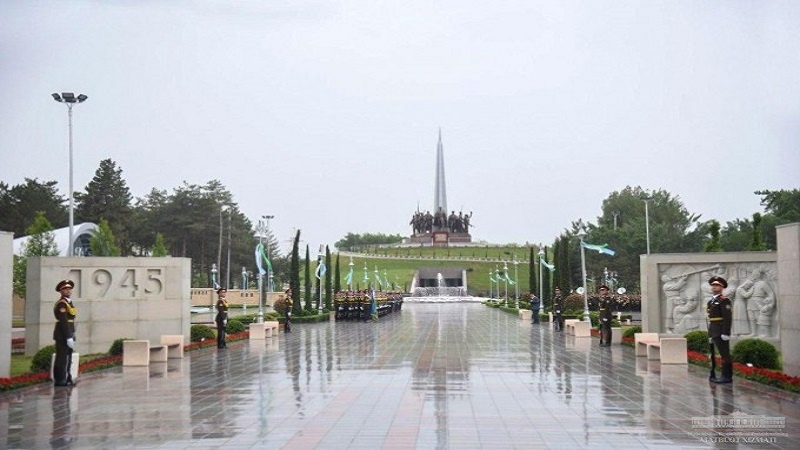
The Memorial Complex includes a park area and a museum of Victory “Shon-sharaf”. The park area is 14,5 hec. The Victory park is divided into thematic areas. In order to listen detailed information about each area or exposure, you may come closer to them.
On your left side is the area of weapons and military equipment.
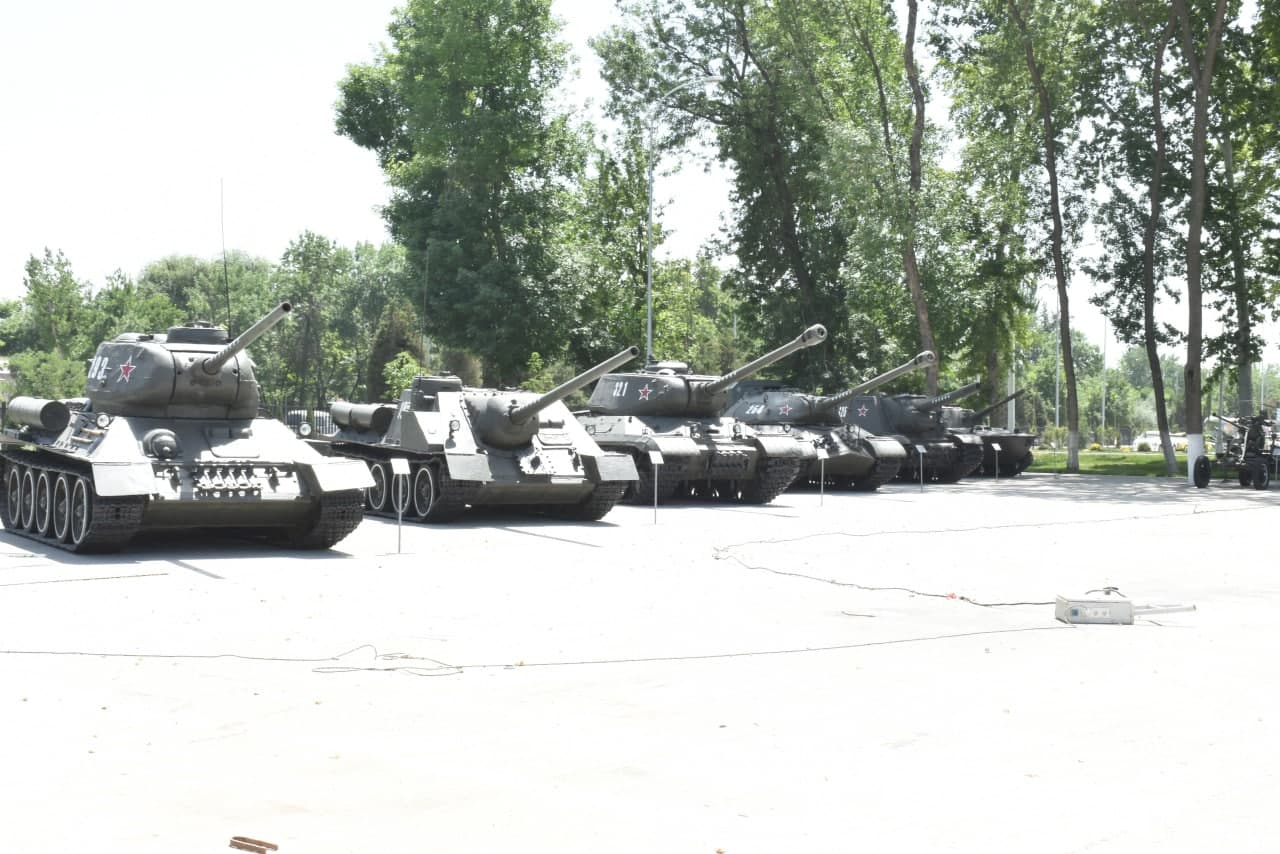
On the square models of armored vehicles, anti-aircraft missile and artillery weapons from the world war II and the post-war period are presented. Here you can see:
- Tank T-70. The Soviet light tank.
- The legendary Soviet tank T-34 – had a huge impact on the end of the war. Taken together, the T-34 is considered by many experts and military experts to be the most advanced tank of World War II. It was this tank that greatly influenced the construction of tanks in all countries. Each tank builder has built his own tank, estimating the performance and advantages of the glorious T-34 tank.
- Self-propelled artillery SU-100.
- The Soviet heavy tank IS-2. It was the most powerful and the most heavily armored of the Soviet serial tanks of the war times. Fascists recognized excellence of this tank.
- The Soviet heavy tank IS-3. It was the latest Soviet tank produced at the end of 1944 year. The IS-3 literally several months late for the war, but in a defeated Berlin the tank nevertheless marked on September 7, 1945, a parade of allied forces took place in honor of the end of World War II. Then the IS-3 was first demonstrated, which made a real sensation.
- ISU-152. Self-propelled artillery installation. the Fascists called it “Can opener” with horror, an installed 152.4 mm howitzer fired incredibly heavy shells weighing 49 kilograms at a speed of 600 meters per second and successfully penetrated the frontal armor and tear off the German towers “Tigers” and “Panther”, a less secure technique of the Nazis and completely irreparable failure, even if the shells exploded a few meters.
- PT-76. The Soviet light tank amphibious tank of 1951 year.
- The 37 mm automatic anti-aircraft gun AZP-39 of 1939. Anti-aircraft gun called Keeper of the sky.
- The 57 mm automatic anti-aircraft gun AZP S-60 of 1950. It became the first Soviet field anti-aircraft gun, the guidance of which was carried out by the station remotely.
- The 100 mm automatic anti-aircraft gun KC-19 of 1947 year. It designed to defeat high flying targets.
- The BM-13 jet mortars combat vehicle widely known among the people as "Katyusha" of 1941. Along with the legendary T-34 tanks "Katyusha" became a symbol of Victory.
- Further to your attention presents models of anti-tank, divisional and field guns, as well as howitzers. The visitors can have acquainted on the plates with the tactical and technical characteristics of the presented equipment.
Further on the territory of the weapons and equipment, aviation is represented:
- The Yak-3 – the Soviet light fighter, created under the leadership
S. Yakovlevim of 1943 year. - The La-5 – the Soviet single-engine fighter, created under the leadership
A. Lavochkin of 1942 year. - The IL-2 – the Soviet storm trooper, created under the leadership
V. Ilyushin of 1939 year. - The LI-2 –the Soviet military–aircraft, created under the leadership P. Lisunova of 1942 year on the base of the passenger plane PS-84.
- The La-7 – the Soviet single-engine fighter, created under the leadership
A. Lavochkin of 1943 year.
2.The Central alley
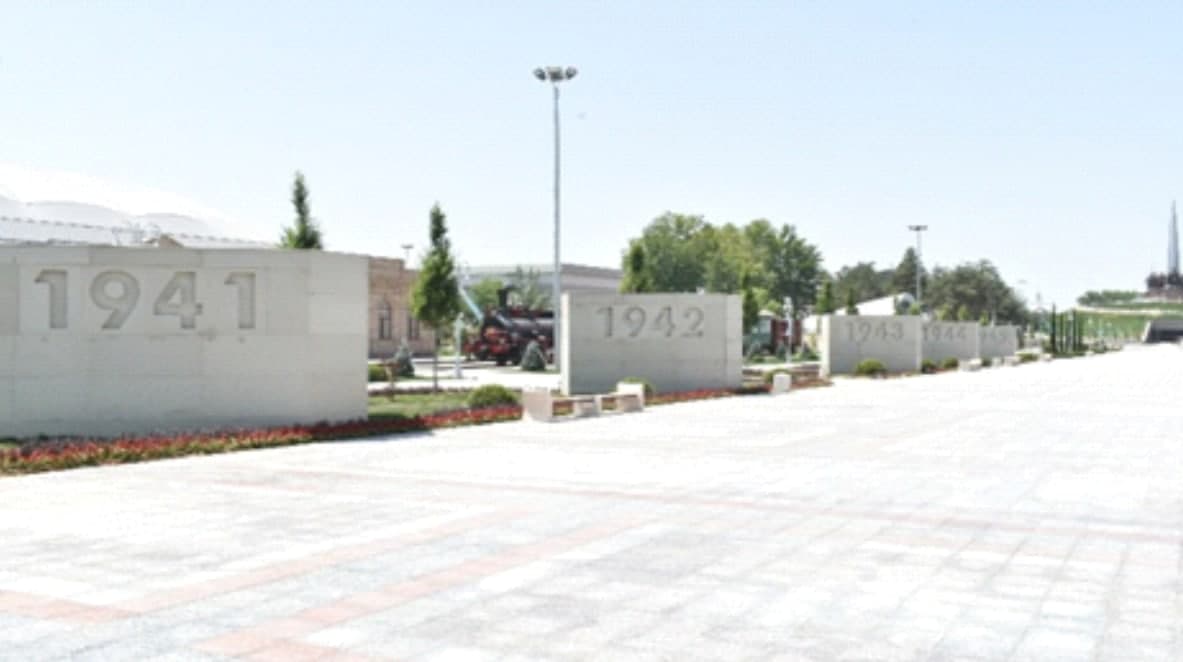
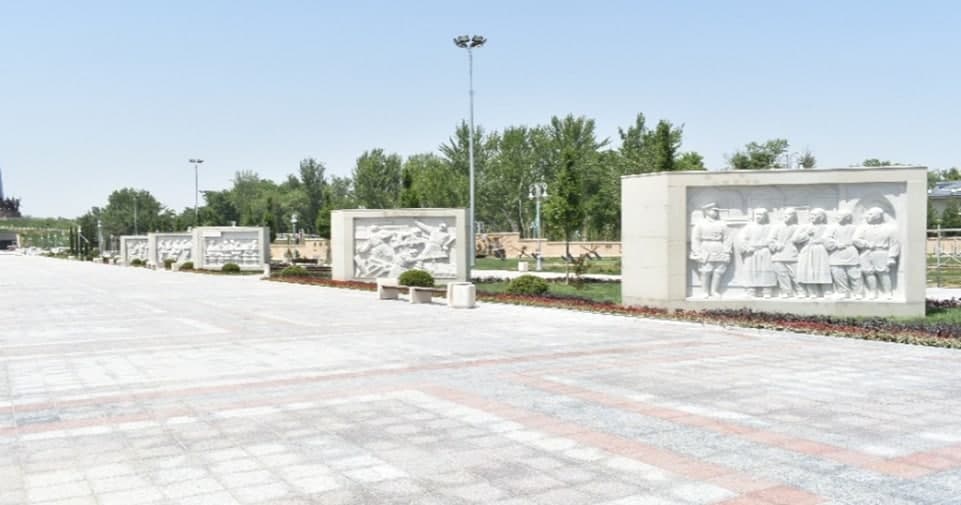
Along the central alley there are panels (stone bas-reliefs) depicting the events of the World War II, which reflect the heroism, hard work, courage and bravery, tolerance and unwavering devotion of the people of Uzbekistan at the front and behind the front.
- The area of horrors of the war
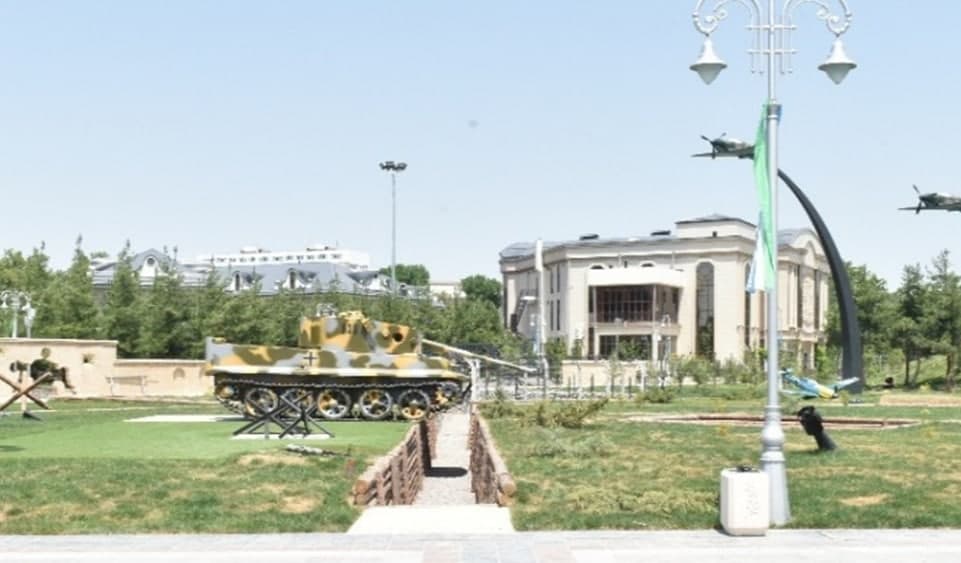
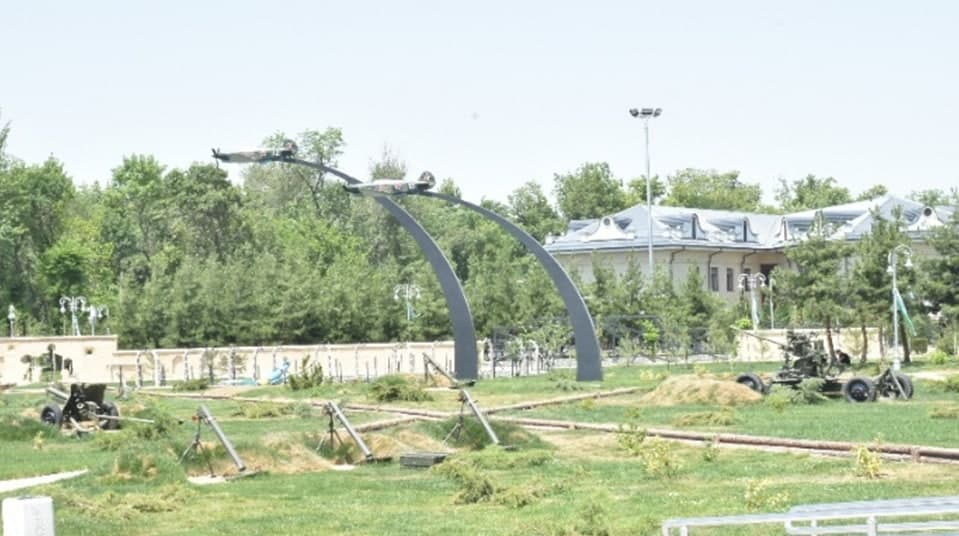
The area of horrors of the war are compositions that will tell us about tragic events that took place during the World War II, which increase feelings of hatred for crimes and atrocities committed against humanity, they call us to constant vigilance.
In Second World War was fought by air, water and land. The sight of a German plane which was shot down in this area is a symbol of the destruction of fascism that is trying to dust our peaceful and clear skies.
In the horror zone of war, you can walk through trenches, machine-gun firing positions and look into the dugout.
The Position of the artillery guns
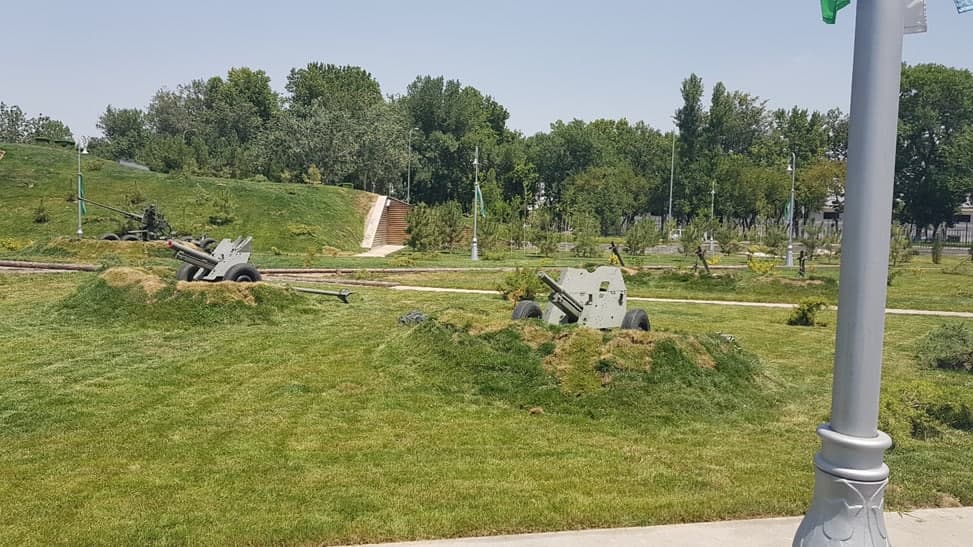
Here is the position of the artillery guns. There are the 76 mm OB-25 regimental gun of the 1943 model (to the right in the direction of shooting) and the 45 mm anti-tank gun of the 1937 model (to the left) at the position.
The term “regimental” means that such guns were armed with an artillery battery in the regiment. Our soldiers lovingly called them “regiments”, and because of the caliber they called the 45-mm cannon “forty-five”.
Basically, these guns were used for the so-called support of infantry “fire and wheels”. This meant that the gunners went on the attack together with the infantry, manually pushing the guns with the barrel forward, and fired at the visible firing points of the enemy. The weight of one such gun was up to 600 kg, and four people moved it quite easily.
But being in the ranks of the infantry, the gunners inevitably fell under the bullets of the enemy. The only protection for them was a small shield of the gun. It must be said that the very presence of the guns on the battlefield encouragingly acted on the infantrymen, who appreciated the support of artillery fire.
From the first days of the war, fighters and commanders of the Red Army knew that artillery was not enough against German tanks and attacking infantry groups. For firing at armored vehicles regularly involved everything that could shoot, including 45-mm anti-tank and 76-mm regimental guns. A successfully fired melee shell could cause problems for German light and even medium tanks, but this was clearly not enough for a successful fight against heavy enemy armored vehicles.
These light guns, which managed to move behind the advancing infantry, were indeed indispensable during the war.
The Wounded Soldier
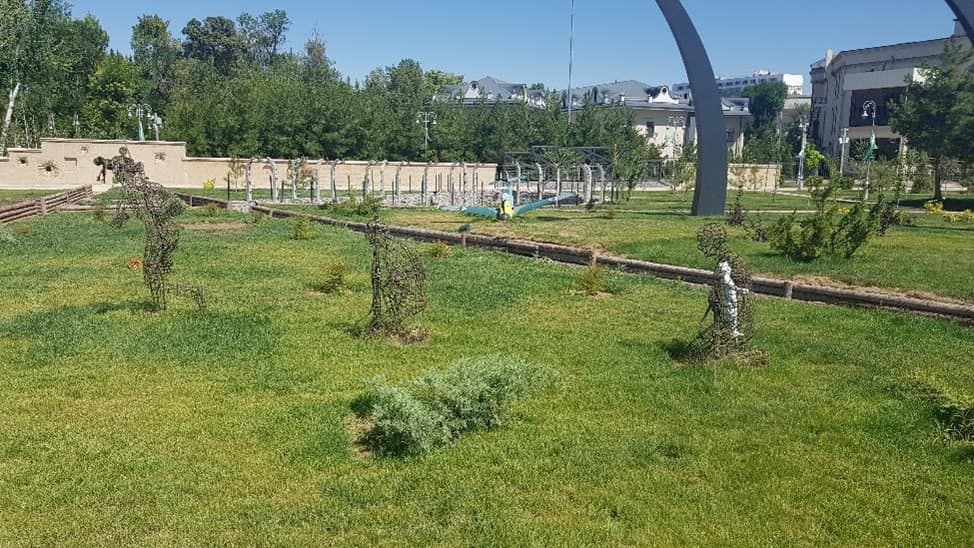
World War II was the greatest destructive wat in human history. The sculptures are dedicated to the memory of the died and living defenders of the Motherland and express the tragic heroism of the Uzbek people who participated in these ruthless battles.
More than (896) 696 thousand of our compatriots did not return home from the war, more than (870) 640 thousand people were injured.
The Panfilov
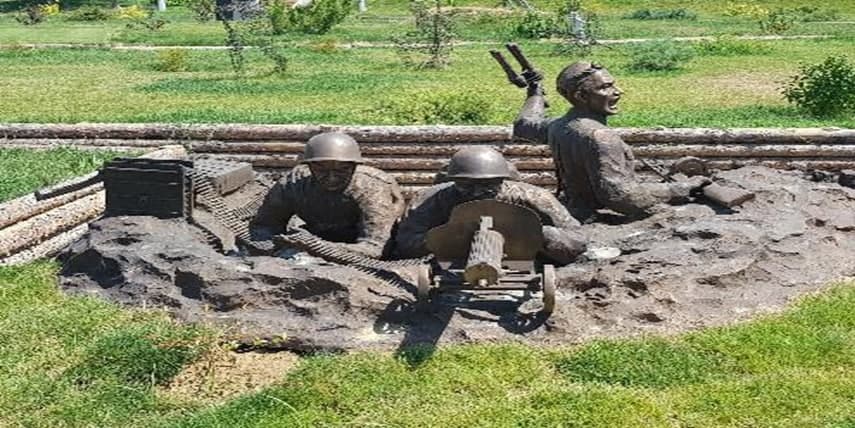
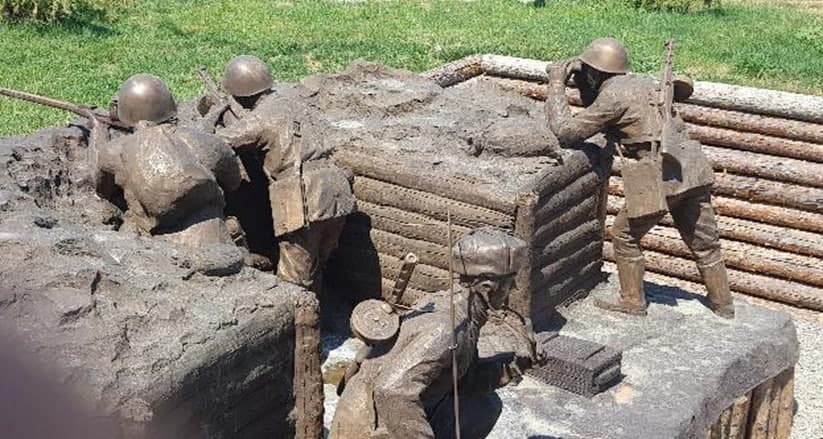
One of the great Victory won by Soviet troops during the war was the heroic defense of Moscow in the Volokolamsk direction, entrusted to the 316th rifle division, commanded by General Ivan Panfilov. This military unit, formed mainly from the Central Asia, destroyed a large number of manpower and equipment of the enemy. This division was renamed the 8th Guards Division for the heroism shown in battles.
The installation is dedicated to the Panfilov heroes, whose feat is still being studied by young cadets and officers from many countries of the world.
The dugout
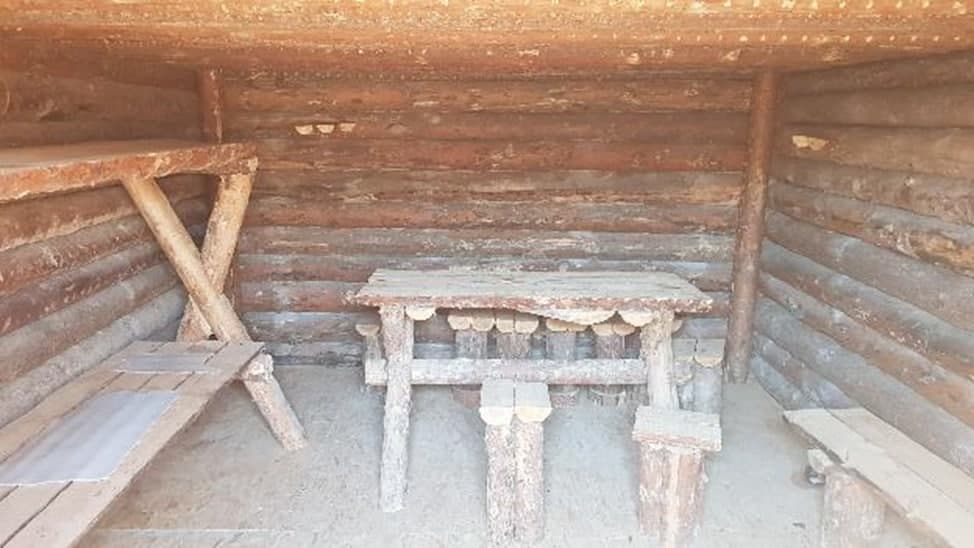
The installation of a dugout gives visitors an opportunity to plunge into the era of the war years, allows them to understand the conditions in which our soldiers lived, and how difficult the Great Victory was.
A dugout was a defensive structure in the form of a recess in the ground with walls and a covering of wood, which was erected to protect against enemy fire. First of all,
a dugout was a place of shelter from enemy attacks. During the war of 1941-1945, dugouts were built as field hospitals, but also served as a place for the deployment of officer headquarters and for personnel rest. In the dugout it was possible to locate both a communications centre and the command post of a company or battalion. The capacity of a standard dugout was 4-8 people.
The dugout was an important part of the front-line life of soldiers and officers; it served not only as a refuge for them, but was also considered a home on the front line. In the dugouts, the soldiers slept, ate and spent their free time from duty.
The Trenches and machine-gun firing positions
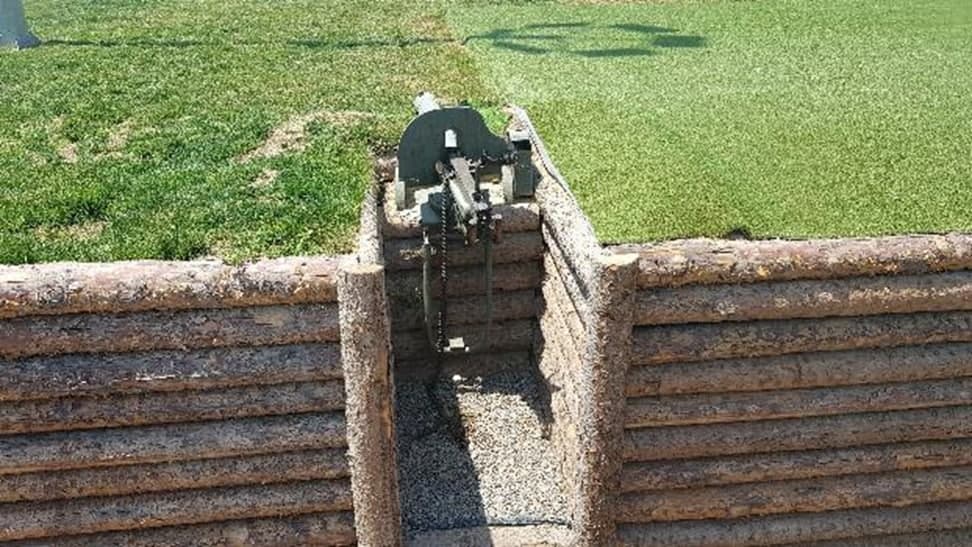
In the zone of terrible war, you can walk through the trenches, machine-gun firing positions, look into the dugouts.
A trench was a defensive earthen structure and it took refuge either one fighter or an entire unit of strength from platoon to regiment.
Here the trench leads you to the firing position of the machine gun. The machine gun crew, armed with light machine guns, usually consisted of two people – an arrow and an ammunition carrier. A heavy 7.62 mm Maxim machine gun was installed here. The calculation of such a gun consisted of 3-4 people, since the easel machine gun is larger and heavier than the manual one. Sometimes, but not always, the calculation of an easel machine gun was located at advanced positions slightly ahead of the main line of trenches. The shelling sector from an extended position is very wide, which increases the combat capabilities of the machine gun.
Machine-gun were effectively used to support the infantry in the offensive and repel enemy attacks in defense. But here was the flip side of the coin, the Nazis, finding the target, did not spare forces to suppress this threat, if the machine gunners did not have time to change the firing position, they were brutally suppressed by strong machine gun or mortar fire of the enemy, and in the reminder of the Wehrmacht sniper the commanding personnel were the primary targets for destruction, snipers and machine gun crews of the Red Army.
101 soldier
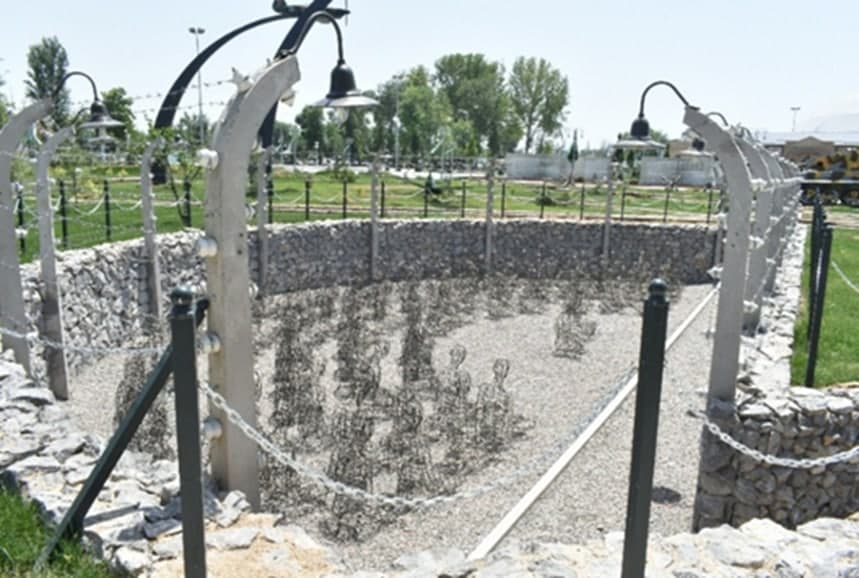
One of the bloodshed of World War II was the humiliation of captives, the brutal punishment of starvation, relentless labor, and insomnia. The tragic fate of 101 Uzbek soldiers captured near Smolensk in 1941 and brought by a special train to the Nazi-occupied Holland. n shot dead by the Fascist on April 9, 1942 in the Amersfoort concentration camp in the Netherlands, in the death camp ordinary Uzbeks were play an important role in raising the spirit of the enemy army according to Goebbels scenario. He planned to shoot a short video in which Soviet soldiers tear each other apart for a piece of bread. For this purpose, Uzbek citizens were kept without food for two months. But Goebbels’s plan broke down. Oriental upbringing prevailed over starvation. When a loaf of bread was thrown into the center of the carriage, one of the prisoners picked up the bread from the ground and kissed it three times. Then the Uzbeks sat down in a circle, folded their legs in an oriental fashion and handed the loaf to the oldest. The elder broke off a piece and passed it around. He kept the last piece of bread for himself, then after reading a prayer, they rose from the ground.
The Fascists outraged by this, Joseph Goebbels, the minister of propaganda of Nazi Germany, ordered them to be brutally punished and beaten. By April 1942, 77 of the surviving captives had been taken into the woods by German commanders and shot.
Our people, who showed great respect to the small, taught Hitler's army a lesson in Uzbek morality. Goebbels' goal did not materialize.
The rest of the soldiers
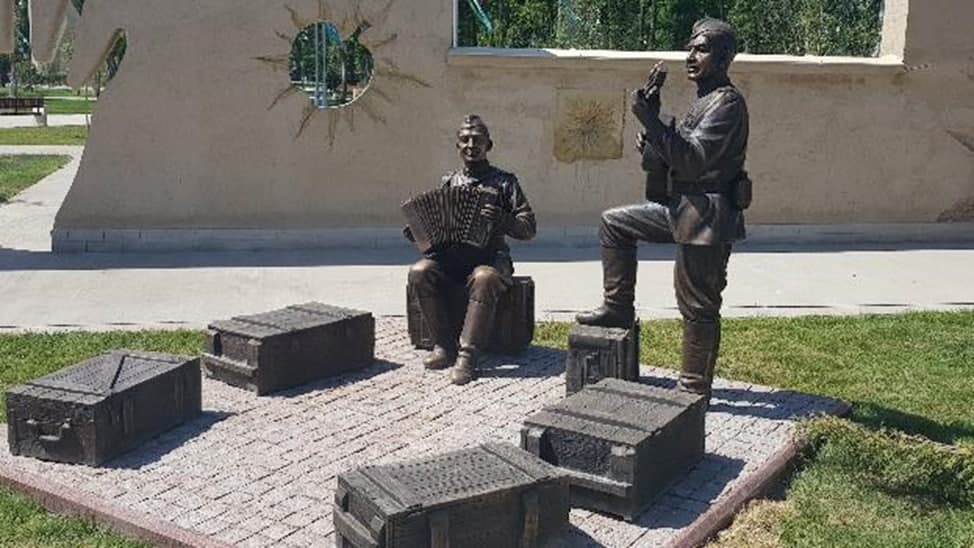
In addition to hostilities and the constant proximity of death, there is always another side to the war – it is also hours of rest and leisure.
Rest, and above all sleep, was very important in the war. There was always a lack of sleep at the front. On the front line at night everyone was forbidden to sleep. During the day, half of the personnel could sleep, and the other half could monitor the situation.
Front-line leisure was spent on everyday worries: housing arrangement, food, repairing uniforms, washing, bathing, talking with comrades in arms, letters, parcels from home and front-line concerts.
Fearlessness in the face of the enemy, heroic attitude, manifestation of patriotism, which helped the Soviet people to defeat fascism, were caused, among other things, by the war song. The battle songs led the soldiers into battle, they also made them empathize with their comrades-in-arms and brothers in arms, quenched their homesickness.
There was also evidence that our troops went on the attack, playing decisive military marches on the accordion – the soldiers took the battle and walked forward, and the accordion players performed in the center and on the flanks. Such offensives had always instilled terror in fascist soldiers, forcing them to retreat even with a greater numerical superiority.
4. The Railway station of Tashkent
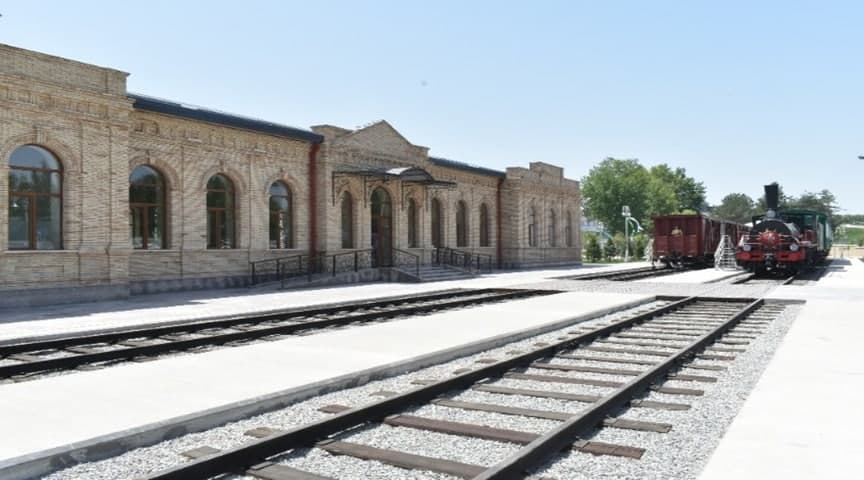
The railway station served as a “way of salvation” during the World war II. It was important strategic object, and was the link between the front and rear. Weapons and equipment, ammunition, food products and warm clothes were sent from Uzbekistan to the front. The population, wounded soldiers, industrial enterprises, and higher educational institution were
evacuated from front to our country.
The military-sanitary train
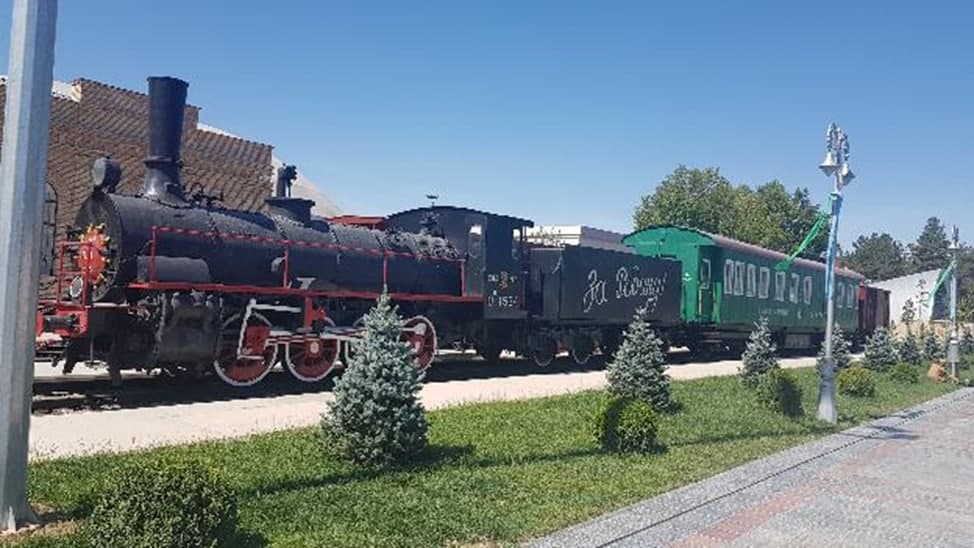
Already on the third day of the war, on June 24, 1941, the People's Commissariat of Railways of the USSR instructed the country's railways to form 288 military-sanitary trains. Six thousand wagons were allocated for them and the staff railway workers was determined.
The wagon workshop of the Tashkent steam locomotive repair plant received a combat mission - to prepare special trains. Equipment for them was not received. It took to produce it on the spot. Machines for the seriously injured were made by a group of women and adolescents. They worked whole day and night. People understood that they had to cope with the task as quickly and as best as possible.
In September 1941, the first three ambulance trains left the carriage workshop for the front, and four more in the next two months. In December, five convoys with red crosses were sent to the front immediately. In total, Uzbek railway workers gave the front 18 medical trains and 5 armored trains.
Sanitary trains are a special page in the history of war. These were hospitals on wheels, where for days, doctors and nurses worked without resting at operating tables. Such trains, during the war, transported millions of wounded and sick, including those to evacuation hospitals located in Uzbekistan.
The military sanitary train consisted wagons for heavily and lightly wounded, an insulator, a dressing pharmacy, a kitchen and other service wagons.
In the battle, the timely evacuation of the wounded on the battlefield was the law. Trains operated in the immediate vicinity of the front line, orderlies and sisters received wounded fighters who arrived from the battlefield - they took off bloodied gymnasts and trousers from them, surgeons in the operating rooms performed emergency operations.
Every nurse had 165 injured people. They practically did not sleep on a loaded flight. Every morning doctors visited and gave an appointment them, and they were provided with dressing, feeding, as well as sanitarians cleaned the wagons. Then they wrote letters dictated by the wounded, and read them aloud.
Despite the distinctive signs of the Red Cross, Hitler pilots from the first days of the war hunted for military ambulance trains. Only in 1941, 224 attacks were carried out on ambulance trains.
Sanitary trains were required by the medical service of every front, every army. During World War II, military-sanitary trains saved millions of wounded, making their way out of the "cauldrons" and the hottest places of the front line, and the medical staff showed stamina and courage saving the lives of soldiers under shelling and air strikes of the enemy.
In the station building there are expositions of soldiers departing to the front; receiving citizens evacuated to Uzbekistan, sending agricultural products to the front. Also presented to your attention models of an armored train, a military ambulance train and a steam locomotive produced in Uzbekistan; photographs of military train drivers, including the first female train driver, holder of the Order of Lenin Basharat Mirbabayeva.
5. The amphitheater
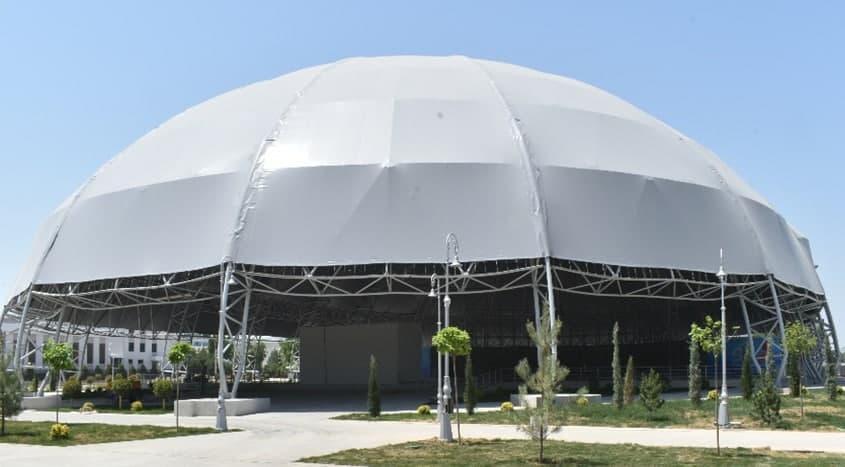
The amphitheater is designed for 1,000 people and is one of the creative examples of our people. May 9 is the “Day of Remembrance and Honor”, January 14 is the “Day of Defenders of the Fatherland”, dedicated to various meetings and spiritual and educational events related to the Second World War.
6. The symbolic wall
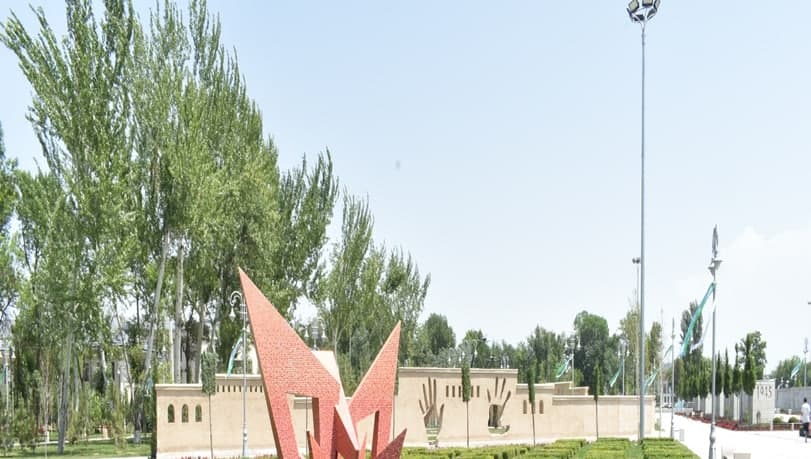
Almost half of the able-bodied population went from Uzbekistan to the front – more than 1 million 951 thousand people. Every third dead for our common homeland. More than 500 thousands Uzbek fighters gave his life for our homeland.
The symbolic wall erected in the center of Victory Park symbolizes the front line. The handprints on the wall reflects the hard work of the Uzbek people in the rear, their caring hands, hard work and heroism.
It underlines the fact that the Victory was forged not only on the battlefield and in the rear.
The installation dedicates children who evacuated from the front lines
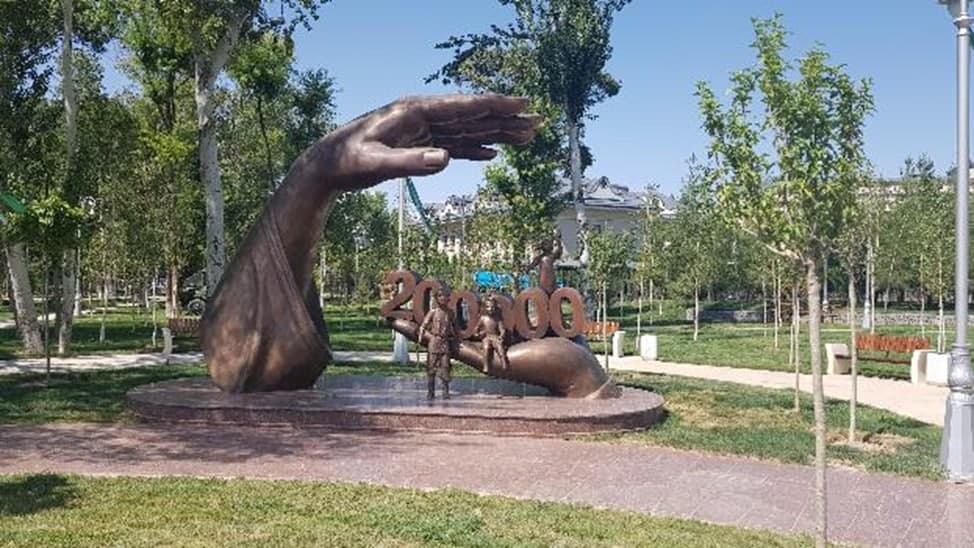
The war destroyed thousands of families, deprived children of their parents, completely disrupted the way of life of people.
During the war, more than 1.5 million people were evacuated to Uzbekistan from the front-line regions of Ukraine, Belarus and Russia. More than 200 thousand of them were children. Residents of Uzbekistan provided them with housing and shared with them the last piece of bread.
This exposition – humanity, mercy, kindness of the Uzbek people.
8. A land of mourning and sorrow
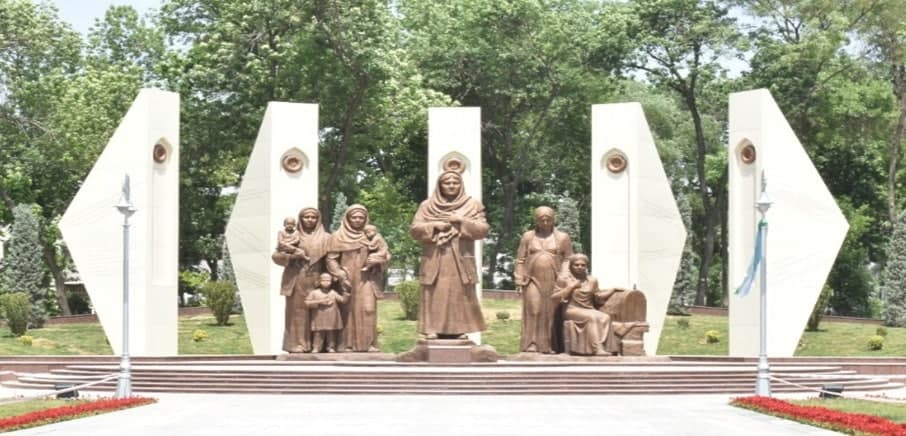
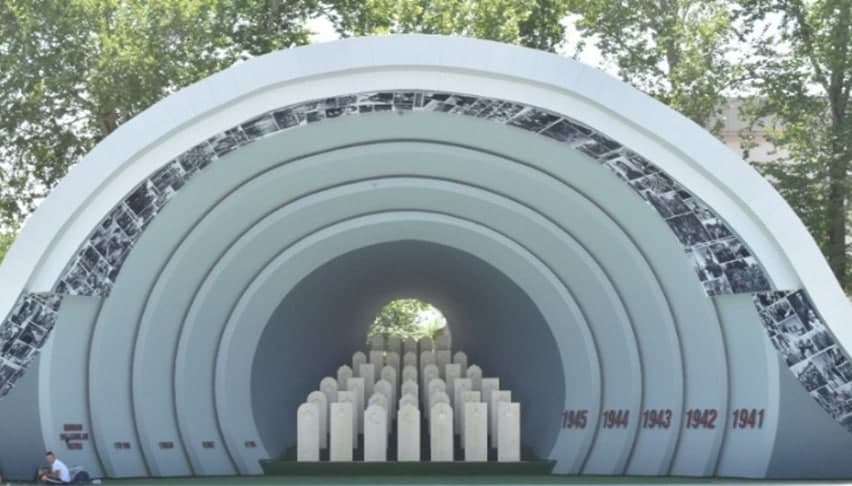
A land of mourning and sorrow. It consists of monumental statues and compositions that reflect the courage of our compatriots who perished during World War II, returned from the war with disabilities, and our compatriots who suffered in enemy concentration camps. In the land of mourning and sorrow, one can feel that our people are brave, courageous and have a great heart. It calls for respect for the memory of thousands of our heroes who sacrificed their lives for our present prosperous days.
World War II was a great crime against humanity, separating mother from child, child from mother.
The special place in the Victory park is installed majestic monument
“A symbol of love and fidelity”. It reflects Zulfiya Zakirova and her family, embodying a generalized image of an Uzbek family in the guise of Zulfiya Zakirova.
Zulfiya Zakirova from the village of Khanabad, Zangiata district of Tashkent region, lost all five sons in World War II – Isokjon, Ahmadjon, Muhamadjon, Vakhobjon and Yusufjon. Four of her daughters-in-law were widowed and five grandchildren were orphaned. The daughters-in-law followed the example of Zulfiya aya, remained faithful to their family and never married again. This is an example of great love and loyalty. It is an anthem of love and devotion, a symbol of the invincible strength of the Uzbek woman.
The composition “tears” depicts a look at war with the human eye. The fact that the peoples of the former Soviet Union, regardless of their different religions and nationalities, fight with the common enemy, and the eternal flame is a shining example of indelible courage and devotion in hearts. The water depicted the tears of millions of people, who eventually turned into rivers. The arch of the composition is complemented with the photographs of the war years. In the opposite the periods of the war years, the number of Uzbeks who died in these years is displayed.
9. The area of joy and happiness
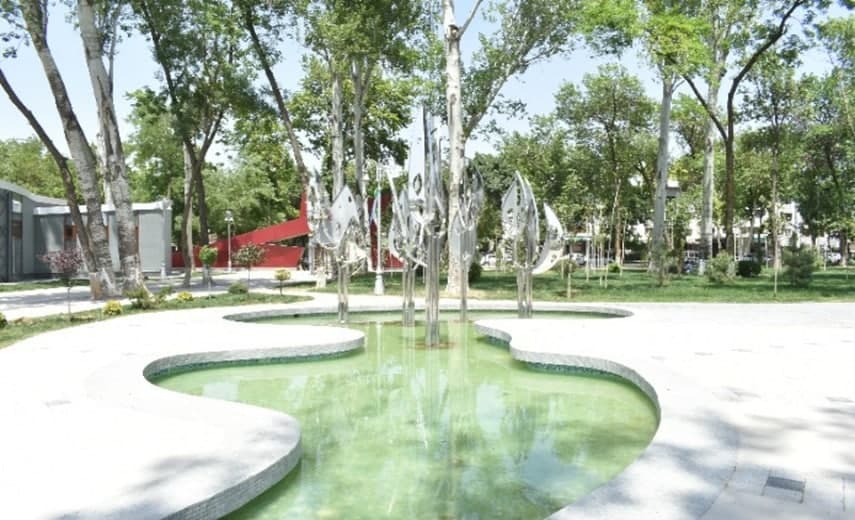
The compositions in the area of joy and happiness increase the feelings of joy, gratitude and respect for the contribution of our people to the Great Victory, pride in the courage of our ancestors and satisfaction with a happy life.
10. The installation “Happy Childhood”
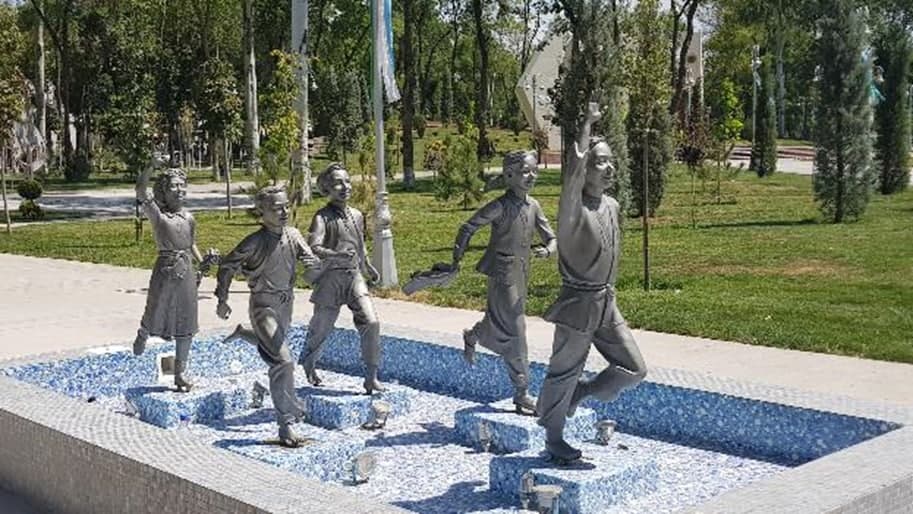
The adoption of children from the front-line regions by the Uzbeks demonstrated the genuine internationalism of the Uzbek land, where children of different nationalities were united into one family. Uzbekistan returned to children the childhood taken away by fascism. The installation “Happy Childhood” shows how evacuated children run on the water and play games, how their faces glow.
The Uzbek land has brought salvation to many, many thousands of children. Children who returned to their cities and villages after the war recall the days, months, years, which spent here, with warmth and gratitude.
11. The Square of Victory
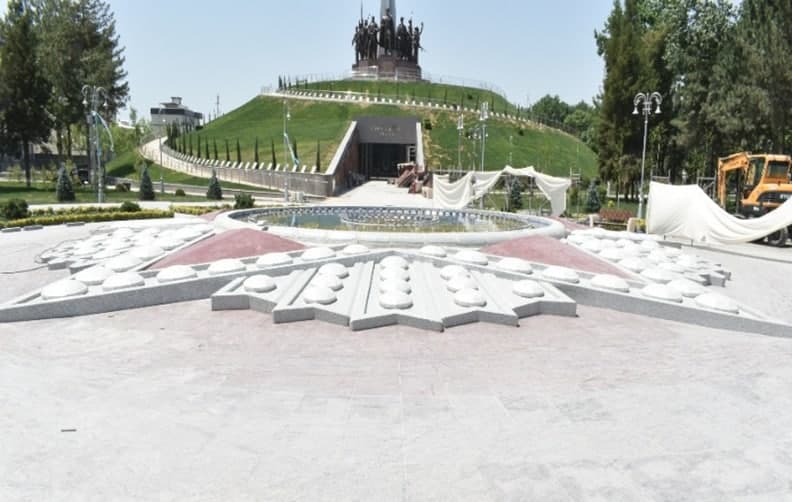
The Square of Victory embodied the idea of courage and perseverance, the idea of always living with pride, for the victory achieved thanks to the courage of our people, always appreciating peace and tranquility, remembering those who fought for peace.
In the center of the Square there is a fountain, the construction of which is made in the form of the highest military award – the Order of Victory, which symbolizes the gratitude of mankind saved from the brown plague.
12. The monument of Victory
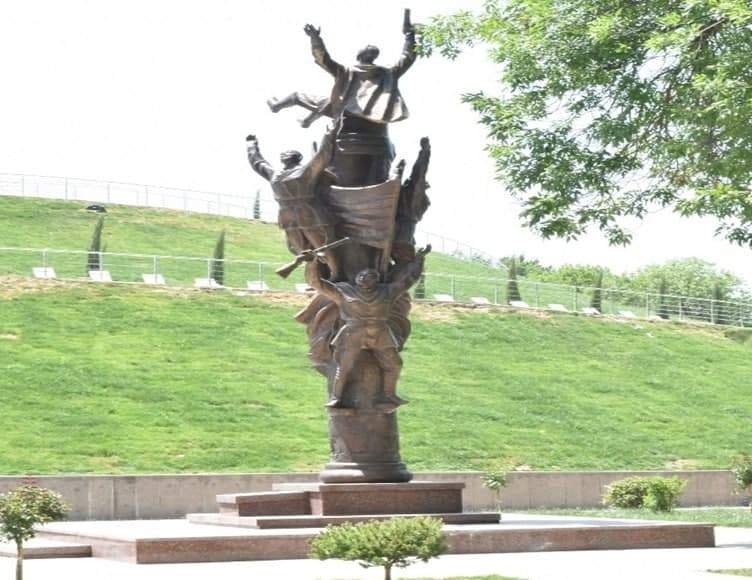
The monument of the Victory is a symbolic expression of the celebration of the Victory over fascism in the form of jubilant soldiers and reflects the sincere happiness of the soldiers who had come a long way from the beginning of the war to the Victory. The monument has been created in honor of the soldiers who fought during the World War II.
It is a great value for us to honor the sacred memory of our ancestors who showed unwavering will and courage in defending the honor and dignity of our people, to continue the noble deeds of our ancestors who sacrificed their lives fighting against the invaders for the present peaceful days.
Ctrl + Enter to notify the administration


